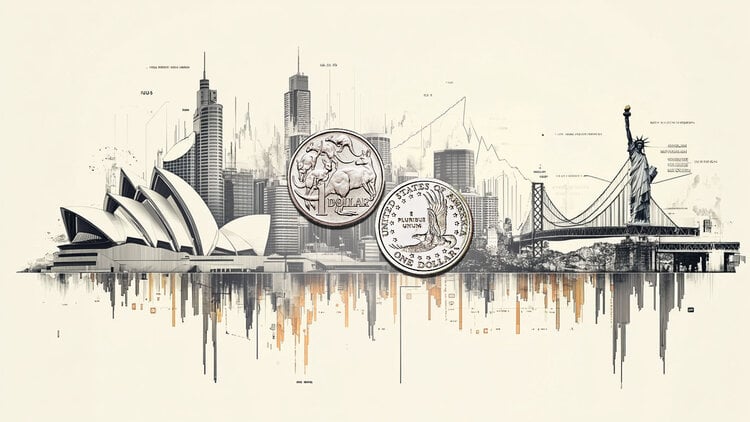Of the many shocking images of the floods of May 2024, which razed Rio Grande do Sul, the flood of the public market of Porto Alegre, the oldest in Brazil, is among the most striking.
The waters of Guaíba began to break into the iconic building of the state capital on the morning of May 3 of that year, forcing traders to close the stores quickly.
Those waters would rise more than 1.5 meters high, surpassing the flood of 1941, until then the largest ever seen.
No one imagined the size of the catastrophe and the losses were almost total.
“When they warned that the water was going up, everyone basically closed the newsstands, some people took some things and we raised scales, products and other equipment about one meter from the ground,” says Carolina Kader, owner of a confectionery input store on the market.
“It was a Friday, we thought it would be back over the weekend to clean, the water would have lowered, and we would normally reopen on Monday,” he says.
She could only return, as well as the other permit holders, on May 29, almost a month after last year’s flood.
The public market would only begin to reopen in mid -June after 41 days of closing.
Inaugurated in 1869, the place is 155 years of existence. In addition to being the city’s main food supply center, the building is a tourist spot, especially for gastronomic activity.
Located in the historic center of the city, it offers fresh food options such as meat, fish, sea fruits and fruits, as well as confectionery products, wines, yerba mate, religious articles, and dishes and snacks in restaurants and bars.
“Those who visit a city and want to know a little about the culture of that place, it is in the public market that he will understand. Here is an expression of gaucho traditions,” says Jefferson Sauer, partner of Banca 43, who has 70 years of history and sells cheese, wine, olive oils, sausages and sausages.
Sauer, who is vice president of the Porto Alegre public market permissionaires association, celebrates that, after such an extreme crisis, all newsstands were able to resist and move on.
In all, there are 102 permits.
“There are about 800 direct jobs,” says the businessman.
A democratic place
In the public market, the variety of products and spices is one of the differentials.
“The customer arrives and can choose that specific cut, is oriented on the best part of a cod according to the plate he wants to do,” says Ronaldo Pinto Gomes, one of the building’s administration coordinators by the city.
Also, the manager highlights, everyone has something to buy there.
“It is the most democratic space that exists in this proposal for food supply. You find mullet at $ 11 a kilo and also the cheese, wines and most sophisticated oils in the city. About 60% of regulars are modest income workers,” adds Gomes.
This feature has a lot to do with the fact that the public market is located almost in front of one of the Urban Train company in Porto Alegre (Trensurb), which connects the city center with the entire metropolitan region, passing through cities such as Canoas, São Leopoldo, Esteio and Novo Hamburgo.
There are more than 110 thousand users per day.
After the floods, Trensurb was closed for 7 months, which impacted the economy of the market and the entire central region of the state capital.
“A significant fraction of this flow goes through the market, ends up buying something,” explains Ronaldo Gomes.
It is estimated that the public market receives about 40 thousand visitors per day.
“In glorious times, it was over 80,000 a day,” says Jefferson Sauer.
The pandemic had already changed the context of occupation of the historic center, with reduced presence of companies, banks and other corporations. The flood crisis accelerated this process.
“We have about 5,000 vacant properties today in the Center. So, I believe that from the occupation of these properties, in the context of a revitalization of the central area, Cais do Porto, with new occupation formats, we can recover this audience,” bet the businessman.
Also returning was Vera Regina dos Santos, former city-de-city, but currently resides in Nova Araçá, Serra Gaucha.
Agência Brasil’s report talked to the retiree when she was entering the market for the first time after the reopening after the flood.
“Here, it has always been my central point in Porto Alegre, I love to come here to buy fish, fruits, teas and vegetables,” he said.
Gradual recovery
There is no global estimate of losses among market permit holders.
Carolina Kader points out that catastrophe caused losses of $ 700,000 in products and equipment in her confectionery stand.
To alleviate the situation, the city granted a 50% discount on the payment of the tuition of stores to all permit holders.
Even so, she evaluates that sales are 40% shorter than the previous period, which was already reverberating the casualties caused by the Covid-19 pandemic.
In the surroundings of the public market, the situation is similar. Marcellus Gomes, owner of a cafeteria in Praça XV de Novembro, does not yet feel a full recovery.
“There are a lot of people in town who lost all things at home, have to buy it all over again and not left to spend on the street,” he says.
Nearby, a pharmacy that was completely devastated by the flood already visualizes a more positive scenario.
“Until December, it was very bad sales. Now, at Easter, it was a turn. We are selling 15% more that I sold in April last year,” says manager Marcelo Barbosa de Souza.
According to Fecomercio do Rio Grande do Sul, with data from the Brazilian Institute of Geography and Statistics (IBGE), after the floods, trade shrunk more than 14% until December last year in the state.
The commercial activity remained at this level until February this year.
The floods left 184 dead and, so far, 26 people continue missing in the state.
Review photos of the historic flood in Porto Alegre
This content was originally published after 1 year, downtown Porto Alegre tries to turn into a historic flood page on the CNN Brazil website.
Source: CNN Brasil
I’m James Harper, a highly experienced and accomplished news writer for World Stock Market. I have been writing in the Politics section of the website for over five years, providing readers with up-to-date and insightful information about current events in politics. My work is widely read and respected by many industry professionals as well as laymen.







